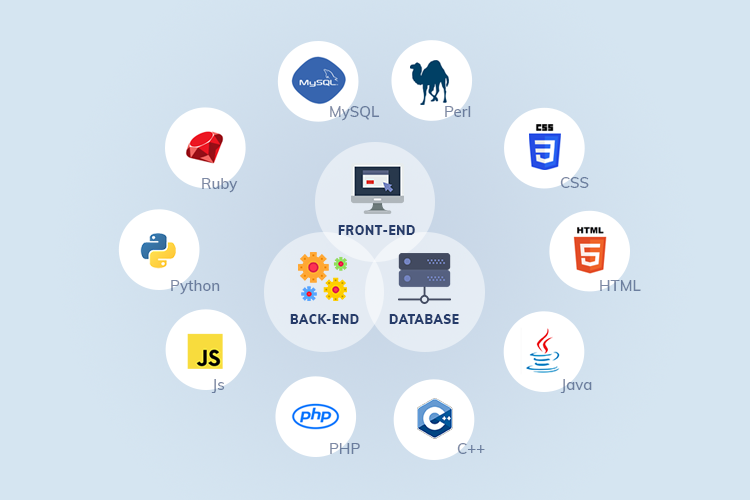Bydly Insights
Explore the latest news, trends, and insights across various topics.
Full-Stack Development: The Magic Behind Websites and Apps
Uncover the secrets of full-stack development and learn how websites and apps come to life. Dive into the magic today!
Understanding Full-Stack Development: What It Is and Why It Matters
Full-stack development refers to the comprehensive approach of managing both the front-end and back-end aspects of web application development. The front-end involves everything users interact with directly, including the layout, design, and user experience, often built using languages like HTML, CSS, and JavaScript. Conversely, the back-end is the server-side component that manages the database and application logic, utilizing languages such as Python, Ruby, or PHP. This holistic understanding of both ends allows developers to create seamless and efficient web applications that function optimally, making full-stack development an invaluable skill in the tech industry.
The importance of understanding full-stack development lies in its adaptability and efficiency. As businesses increasingly demand rapid deployment and iterative development, full-stack developers can streamline the development process by wearing multiple hats, reducing the need for extensive collaboration between different teams. This not only accelerates project timelines but also results in better communication and consistency between front-end and back-end components. As a result, knowing full-stack development is essential for aspiring developers who aim to stay competitive in a fast-evolving digital landscape.

The Essential Skills Every Full-Stack Developer Should Have
To thrive in the dynamic field of software development, a full-stack developer must possess a robust set of skills that span both front-end and back-end technologies. Primarily, a solid foundation in HTML, CSS, and JavaScript is essential, as these are the cornerstones of web development. In addition, familiarity with popular front-end frameworks such as React or Angular enables developers to create interactive and responsive user interfaces. On the back end, proficiency in server-side languages like Node.js or Python is crucial, along with a good understanding of database management systems, including SQL and NoSQL databases.
Moreover, a successful full-stack developer should also possess strong problem-solving skills and an ability to adapt to new technologies quickly. This includes knowledge of version control systems like Git, which is vital for collaboration and code management. Understanding RESTful APIs and cloud services is becoming increasingly important, as these technologies facilitate seamless interactions between front-end and back-end systems. Lastly, soft skills such as effective communication and teamwork are indispensable, as developers often work in interdisciplinary teams to build comprehensive web applications.
How Full-Stack Development Powers Modern Websites and Apps
Full-stack development has emerged as a cornerstone of modern web design, empowering developers to create comprehensive and dynamic websites and applications. By encompassing both front-end and back-end development skills, full-stack developers are capable of delivering seamless user experiences that are both visually captivating and functionally robust. This holistic approach allows for faster development cycles, as a single developer or a small team can handle all aspects of a project, from crafting engaging interfaces with HTML, CSS, and JavaScript to managing databases and server configurations using technologies like Node.js and Express.
The versatility of full-stack development also fosters innovative solutions that are crucial for today’s digital landscape. Here are a few reasons why it is so essential:
- Efficiency: Reduced time and resource investment leads to quicker turnaround on projects.
- Consistency: Unified codebases result in fewer discrepancies and improved collaboration.
- Adaptability: Full-stack developers can pivot between different technologies and frameworks, ensuring that applications remain scalable and relevant.